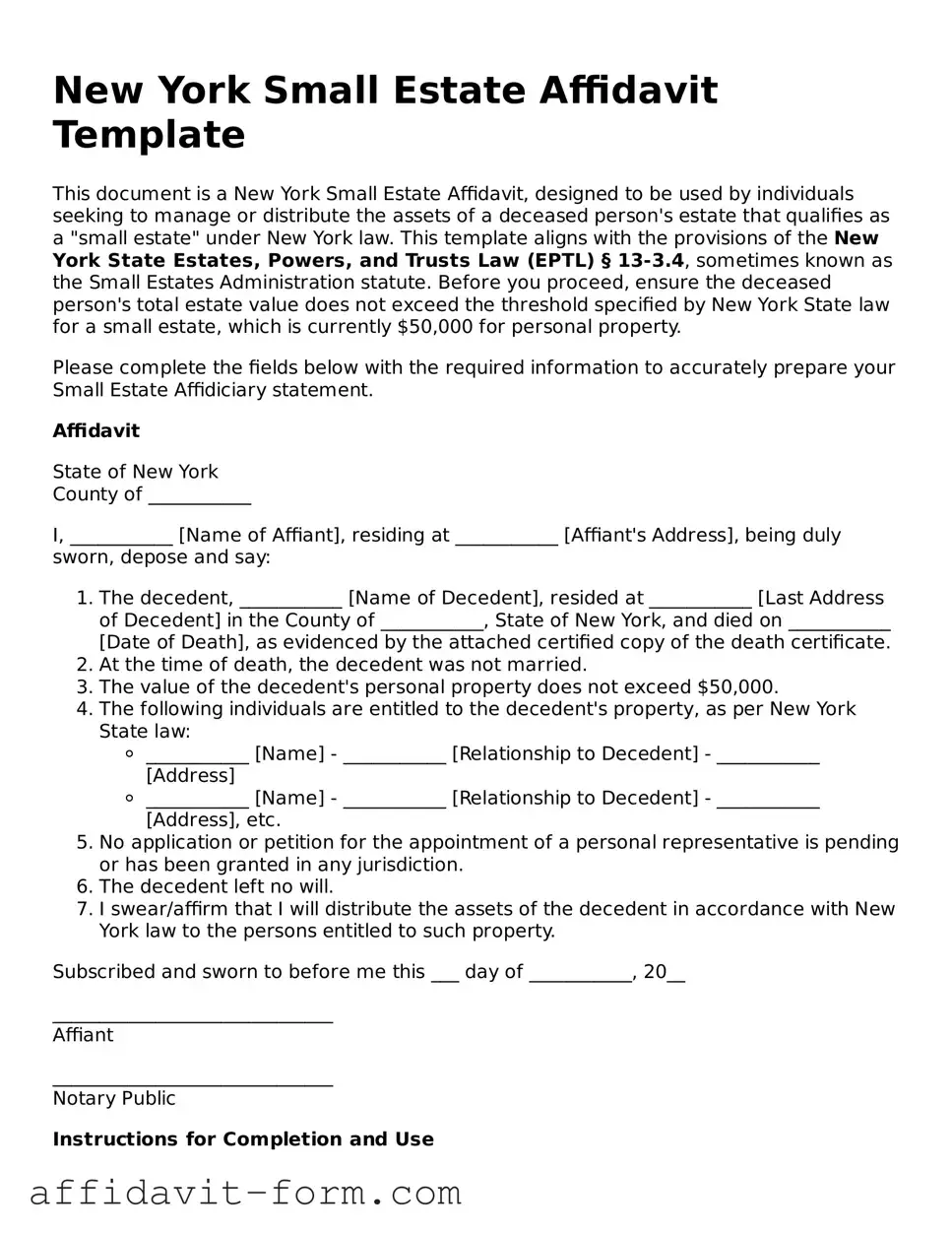New York Small Estate Affidavit Template
This document is a New York Small Estate Affidavit, designed to be used by individuals seeking to manage or distribute the assets of a deceased person's estate that qualifies as a "small estate" under New York law. This template aligns with the provisions of the New York State Estates, Powers, and Trusts Law (EPTL) § 13-3.4, sometimes known as the Small Estates Administration statute. Before you proceed, ensure the deceased person's total estate value does not exceed the threshold specified by New York State law for a small estate, which is currently $50,000 for personal property.
Please complete the fields below with the required information to accurately prepare your Small Estate Affidiciary statement.
Affidavit
State of New York
County of ___________
I, ___________ [Name of Affiant], residing at ___________ [Affiant's Address], being duly sworn, depose and say:
- The decedent, ___________ [Name of Decedent], resided at ___________ [Last Address of Decedent] in the County of ___________, State of New York, and died on ___________ [Date of Death], as evidenced by the attached certified copy of the death certificate.
- At the time of death, the decedent was not married.
- The value of the decedent's personal property does not exceed $50,000.
- The following individuals are entitled to the decedent's property, as per New York State law:
- ___________ [Name] - ___________ [Relationship to Decedent] - ___________ [Address]
- ___________ [Name] - ___________ [Relationship to Decedent] - ___________ [Address], etc.
- No application or petition for the appointment of a personal representative is pending or has been granted in any jurisdiction.
- The decedent left no will.
- I swear/affirm that I will distribute the assets of the decedent in accordance with New York law to the persons entitled to such property.
Subscribed and sworn to before me this ___ day of ___________, 20__
______________________________
Affiant
______________________________
Notary Public
Instructions for Completion and Use
- Fill in all the blank spaces with the appropriate information.
- Ensure you have attached a certified copy of the death certificate of the decedent.
- After completion, submit this affidavit to the relevant institution holding the decedent’s assets (e.g., bank, brokerage firm).
- Consult with a legal professional if you require assistance or have questions about the distribution of assets under New York law.
